Excursions
Trogir
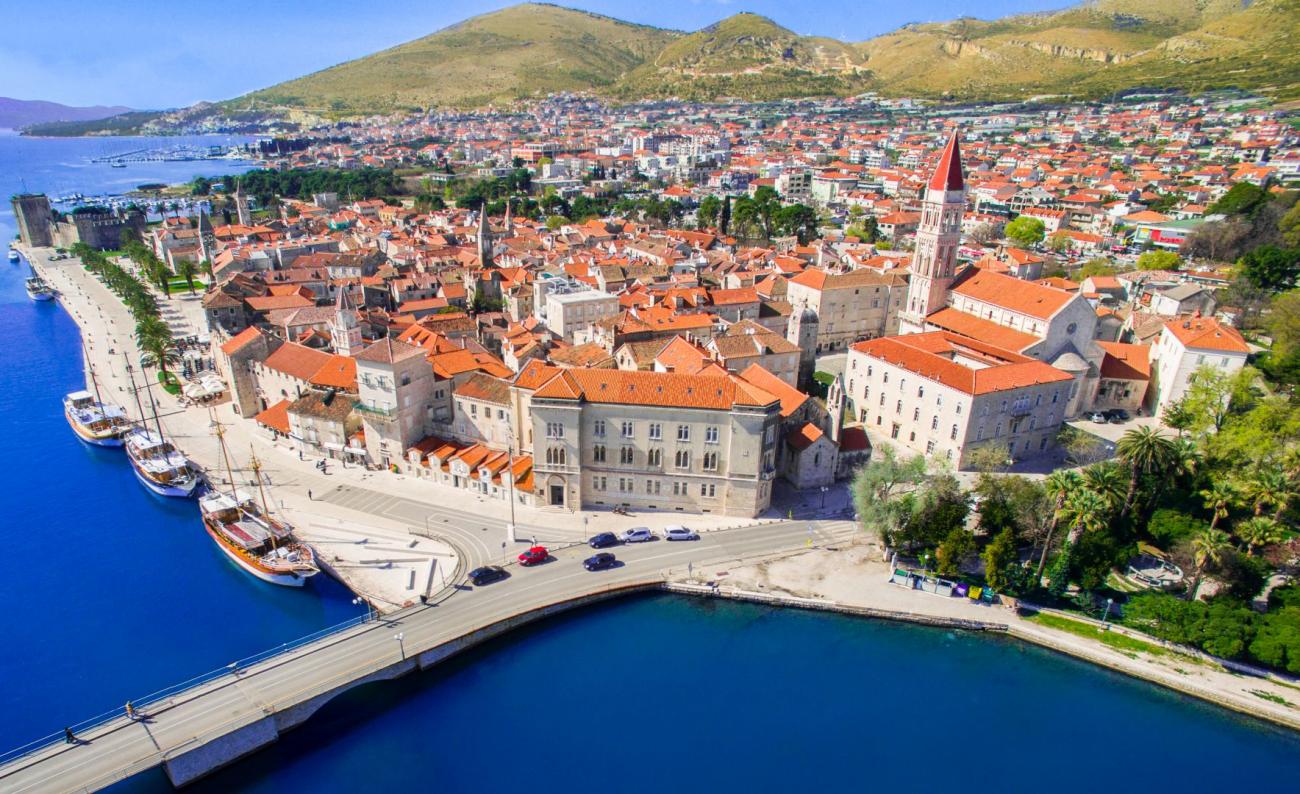

Trogir is situated in Central Dalmatia, along the Adriatic coast. The nearness to the Split Airport (5 kilometres) and a fast connection to the motorway (only 15 kilometres) make Trogir with its surrounding ports and islands an inevitable stop during your visit to Dalmatia.
Its naturally protected harbour has become very popular among the yachtsmen from all over the world. There are numerous sights which can be visited within the distance of only hundred kilometres from Trogir, e.g. the towns of Dubrovnik, Šibenik and Zadar, as well as some of the Croatia’s most beautiful national parks.
Trogir was founded by the Greek colonists in the 3rd century BC. Throughout the history it was occupied by the Romans, the Byzantines, the Hungarians, the Venetians and Napoleon. Culture, humanism and architecture flourished here in the Middle Ages; bulwarks and a tower which were built at that time within the ancient town nucleus defined its outlines. Trogir is today on the UNESCO list of World Cultural Heritage as the best preserved Romanesque-Gothic town in Central Europe.
Omiš - Pirate city
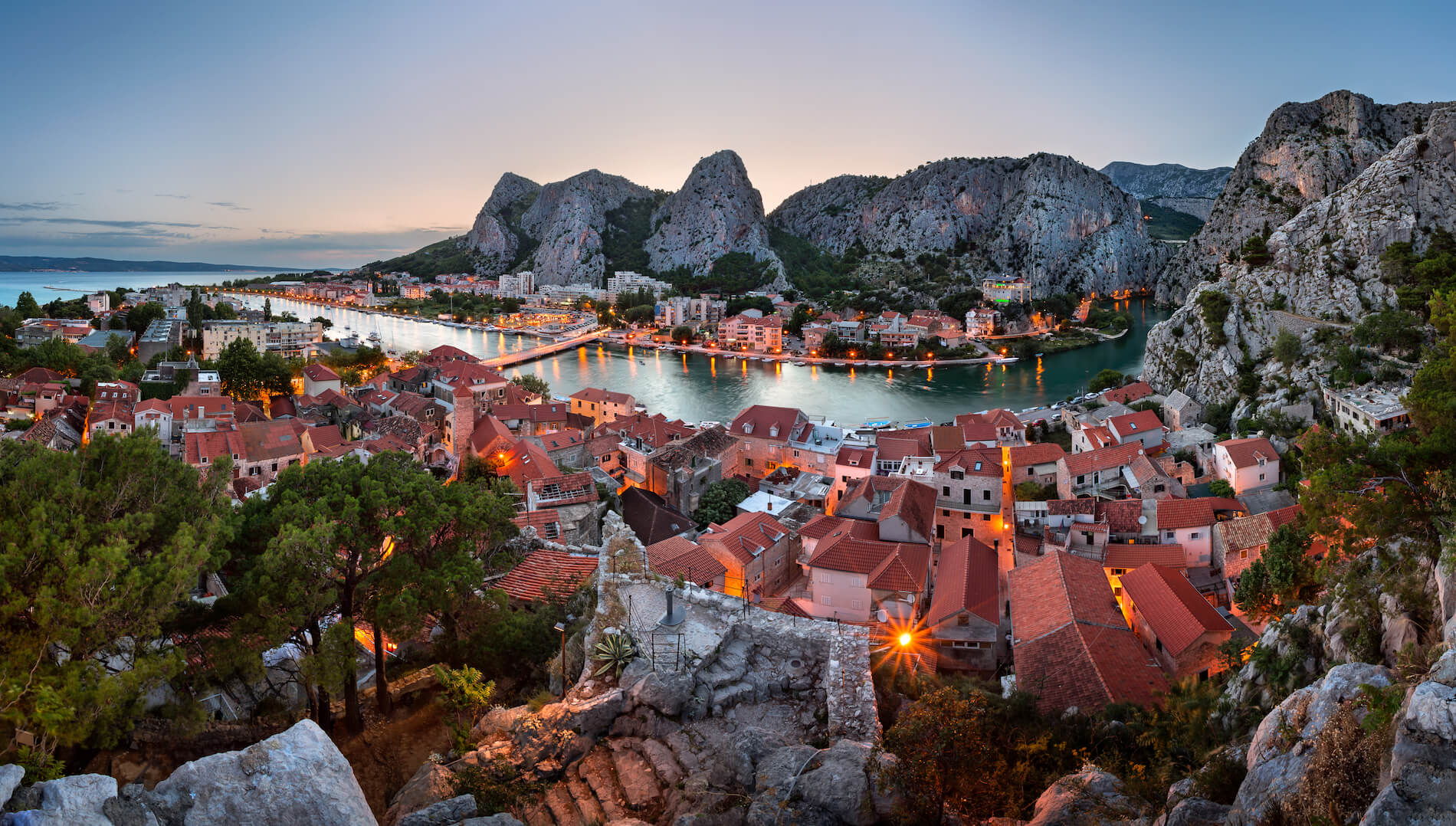

Omiš is a picturesque town with real Mediterranean atmosphere on the estuary of the river Cetina. It is town of Dalmatian Music Bands Festival (klapa) , a town governed by the Omiš Pirates for more than two centuries (from 1221-1444) and a town in the vicinity of which the ancient Republic of Poljica was developed – first of the kind in Europe.
Omiš is situated in the heart of Dalmatia, between the tourist centres Split and Makarska. Upon its wild and interasting history since Roman times and medieval unassailable fortress of the Omiš Pirats, it has become a tourist centre of the extremely beautiful Riviera.
Island Brač
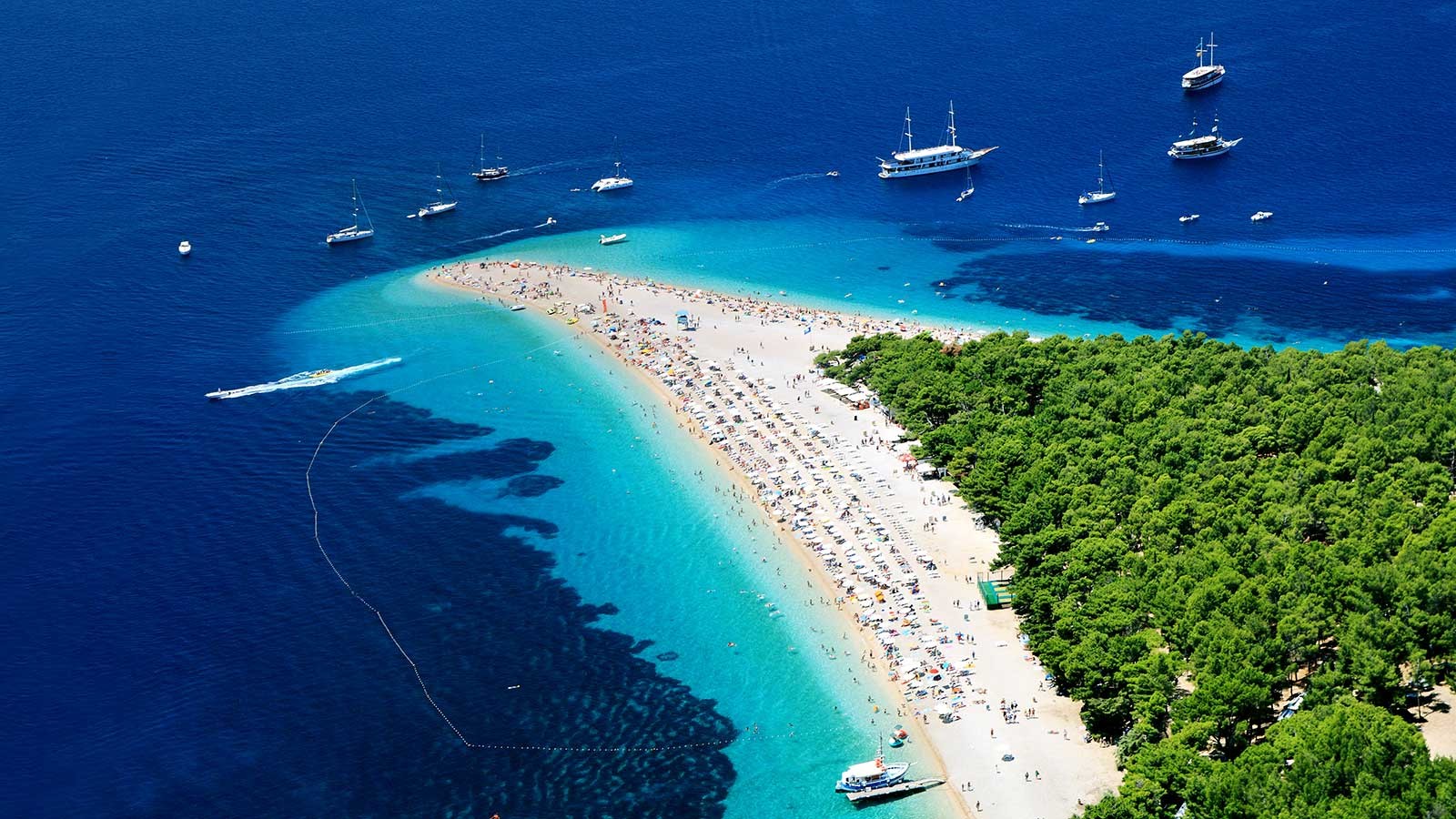

The island of Brač is only 45 minutes away from Split by ferry boat.
With the area of 395 km², it is the largest Dalmatian island and the third largest island of the Adriatic sea, and last but not least important it is the highest island in the Adriatic sea.
The peak’s name is Vidova gora (778/mamsl) with an unforgettable view of the Adriatic sea and the islands. Abundant in small, Mediterranean towns, from Bol, Supetar, Postira to Sutivan and Milna, secluded coves and beautiful beaches.
Brač is famous for its beach Zlatni rat in Bol, included on the list of ten most beautiful beaches in the world
Krka National Park
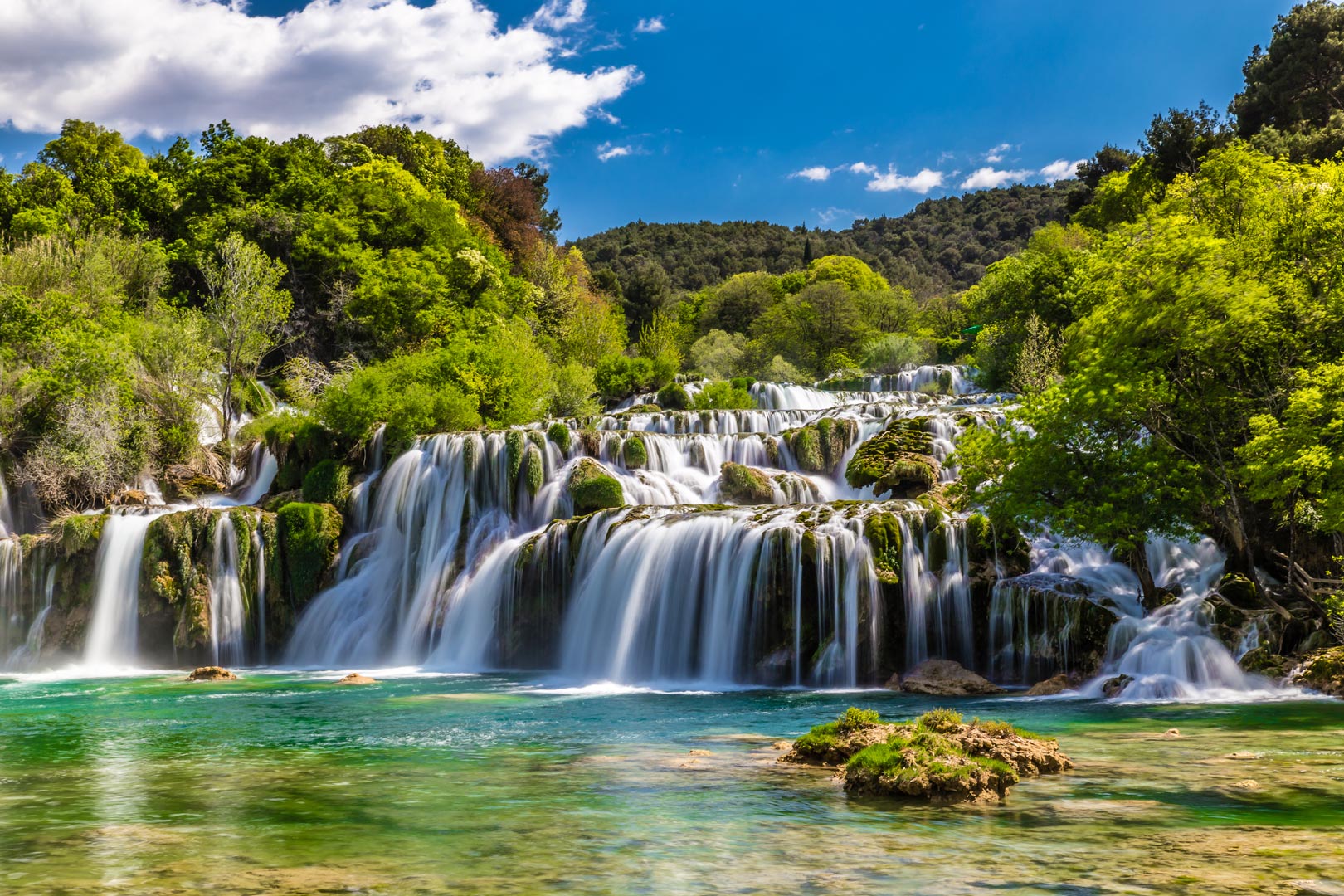

The lakes of this Karst beauty, River Krka, are peaceful and silent while its numerous cascades are blaringly loud and playful.
The beauty and diversity of this river resembles a magnificent orchestral symphony under the direction of the Creator himself. For thousands of years Krka has obstinately hollowed out its path through rock and has created its remarkable waterfalls.
The peculiar travertine cascades of its waterfalls are extremely rare in the world. In the year 1985 its remarkable beauty was recognized and placed under protection proclaiming the 46 kilometres of the Krka River flow which occupy 111 square kilometres a national park.
Dubrovnik
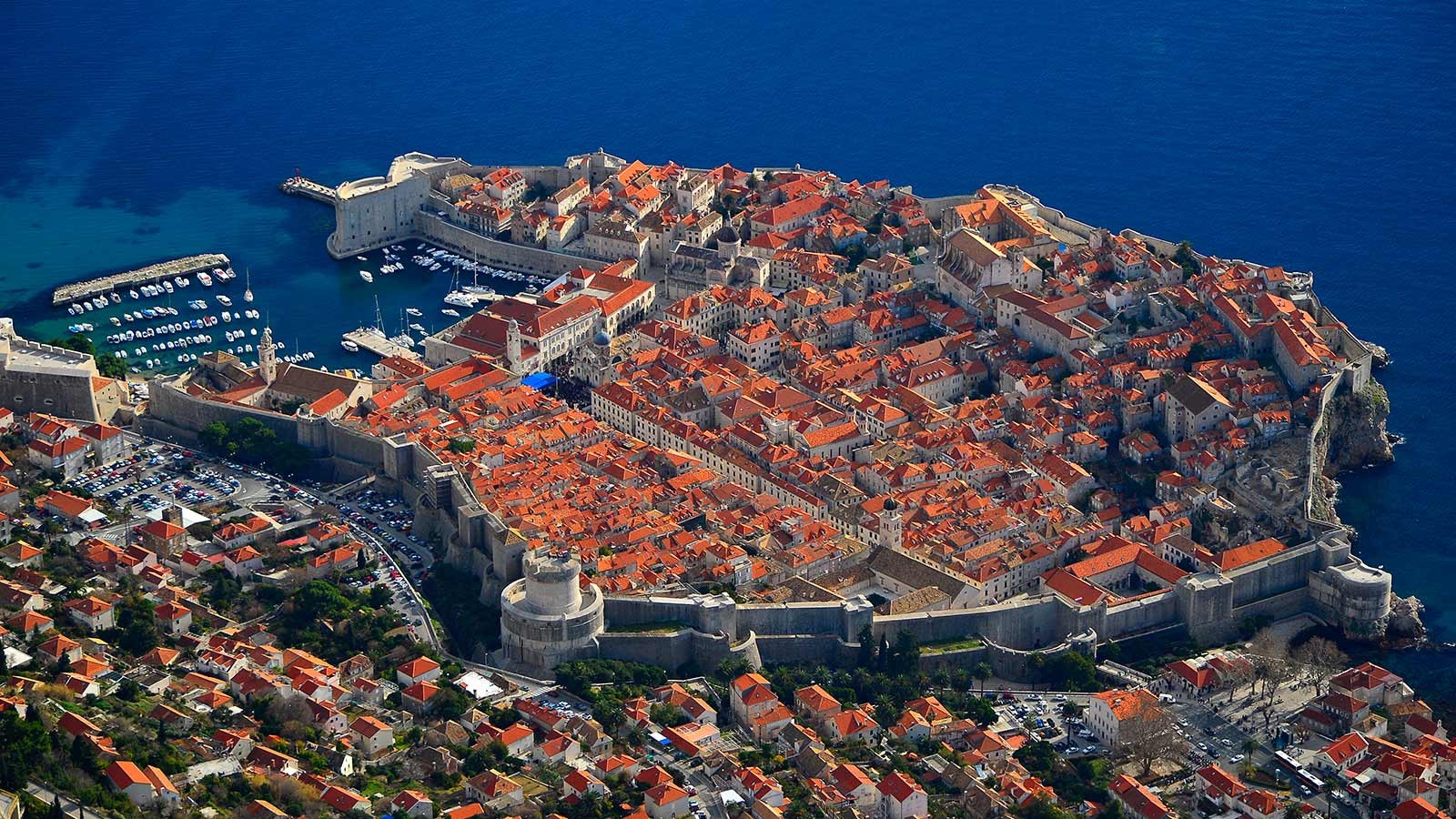

A town of monuments or museums under UNESCO patronage. Starting from the 1940 m long walls with bulwarks, the Stradun, Orlando’s pillar, the gothic renaissance palace of Sponza and the celebrated Rector’s Palace as well as the famous church and monastery, Dubrovnik has, without a doubt, a special place in Croatia’s cultural heritage. Once a part of the Republic of Dubrovnik, there is also the nearby Pelješac peninsula with the 5.5 km long walls of the stone town of Ston. Growing up on the remains of a Greek colony, the island of Korčula with streets that have a fish bone pattern is a true urban gem and asides from the traditional knight’s game called “Moreška”, is most famous today for being the birth place of Marko Polo. In the furthest south, there is the island of Mljet with a Benedictine monastery built in the 12th century that was constructed on an island in the middle of the great lake.
